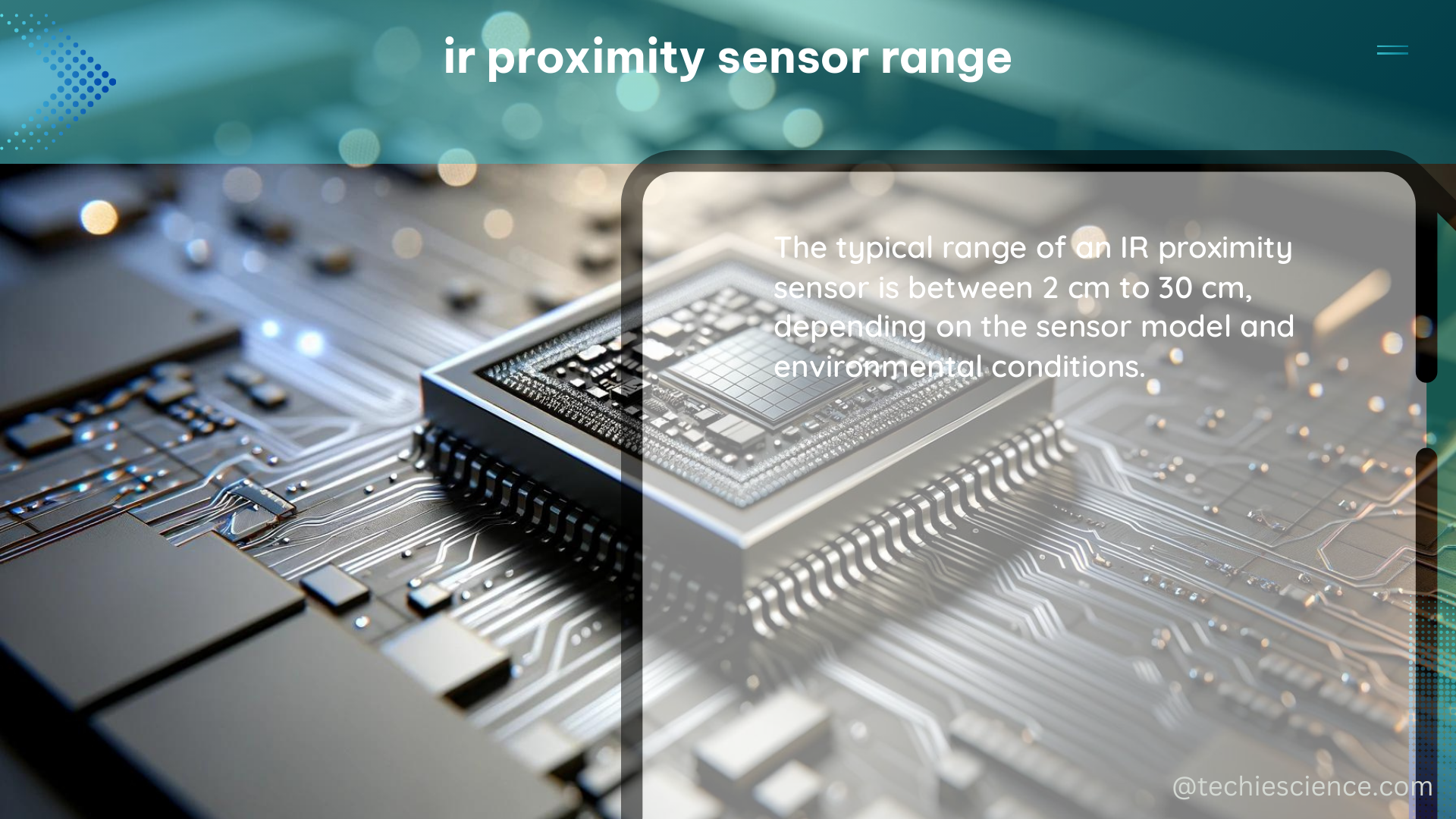The range of IR proximity sensors is a crucial factor to consider when designing projects that involve object detection and distance measurement. This comprehensive guide delves into the technical specifications, challenges, and potential solutions related to IR proximity sensor range, providing a valuable resource for DIY enthusiasts and professionals alike.
Understanding IR Proximity Sensor Specifications
IR proximity sensors operate based on the principle of light intensity back-scattered from objects. According to research, these sensors can measure distances of up to 1 meter, with the sensor design aiming to produce an output proportional to the displacement distance, independent of changes in overall surface reflectivity and nonuniform reflectivity over the illuminated surface.
The sensitivity and range of IR proximity sensors are influenced by several factors, including:
-
Object Reflectivity: The reflectivity of the target object plays a significant role in the sensor’s range. Highly reflective surfaces, such as mirrors or polished metal, can increase the sensor’s detection range, while matte or dark-colored objects may reduce the range.
-
Object Size: The size of the target object also affects the sensor’s range. Larger objects tend to reflect more light, allowing the sensor to detect them at greater distances compared to smaller objects.
-
Sensor Constant: Each IR proximity sensor has a unique constant that determines its sensitivity and range. This constant must be determined through experimental calibration to accurately estimate the sensor’s detection distance.
Practical Insights from DIY Projects

In the context of DIY projects, the Arduino Forum provides valuable insights into building an IR range/proximity detector. One user describes a circuit with two IR LEDs connected to pins 10, 11, and 12, and a voltage divider with a 40k resistor and an IR photodiode.
However, the user encountered challenges with external light sources and noise affecting the sensor’s performance. To compensate for these issues, the user suggests the following techniques:
- Reading Values with LED Source Off: Measure the sensor values when the LED source is turned off to establish a baseline.
- Reading Values with LED Source On: Turn the LED source on and read the sensor values again.
- Averaging and Subtracting: Average the on and off values, then subtract the on values from the off values to compensate for external light and noise.
Despite these efforts, the user still encountered limitations when subtracting on values from off values, indicating a need for a more sensitive sensor or an amplifier circuit to improve the range.
Enhancing Sensor Sensitivity and Range
To address the limitations encountered in the DIY project, forum member Grumpy_Mike provided additional insights:
- Delay after Turning Light Off: Introducing a delay after turning the light off can help the sensors settle, improving the accuracy of the measurements.
- Driving LEDs through a Transistor: Driving the IR LEDs through a transistor can increase their power and sensitivity, potentially enhancing the sensor’s range.
- Placing Sensors in a Tube: Placing the IR proximity sensors in a tube can narrow the angle of the light beam, further enhancing the sensor’s sensitivity and range.
Estimating IR Proximity Sensor Range
While the search results do not provide specific distance measurements or formulas for calculating the distance an IR sensor can “see,” the inverse-square law and the impact of object reflectivity, size, and sensor constant can be used as a starting point.
The formula distance = (constant * size * reflectance)^0.25 can be used to estimate the sensor’s range, but it may require experimental calibration to determine the sensor constant accurately. This formula takes into account the key factors that influence the sensor’s range, allowing for a more informed estimation.
Conclusion
The range of IR proximity sensors is a complex topic influenced by various factors, including object reflectivity, size, and sensor sensitivity. Building a reliable IR proximity detector involves addressing external light sources, noise, and sensor compensation techniques. While specific formulas for calculating the distance an IR sensor can “see” are not readily available, the inverse-square law and experimental calibration can help estimate the sensor’s range.
By understanding the technical specifications, practical insights, and range estimation methods, DIY enthusiasts and professionals can effectively design and implement IR proximity sensor-based projects, ensuring accurate object detection and distance measurement.
References:
- IR Range/Proximity Detector Not Working as Expected
- Using Infrared sensors for distance measurement in mobile robots
- Infrared Sensor for Distance Measurement
- Is there a formula for the distance an infrared sensor senses?

The lambdageeks.com Core SME Team is a group of experienced subject matter experts from diverse scientific and technical fields including Physics, Chemistry, Technology,Electronics & Electrical Engineering, Automotive, Mechanical Engineering. Our team collaborates to create high-quality, well-researched articles on a wide range of science and technology topics for the lambdageeks.com website.
All Our Senior SME are having more than 7 Years of experience in the respective fields . They are either Working Industry Professionals or assocaited With different Universities. Refer Our Authors Page to get to know About our Core SMEs.